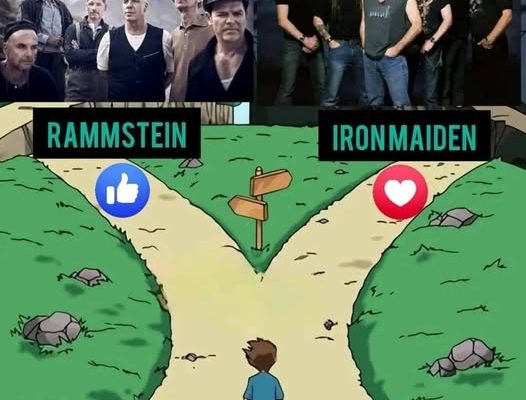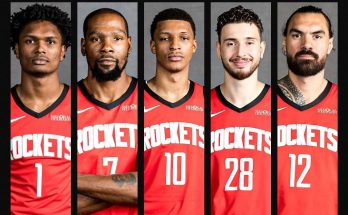When you look at Iron Maiden, you see much more than just a band. What started in the gritty working‑class suburbs of East London in 1975 has blossomed into a cultural eruption that spans continents, languages, generations, and social strata. The story of Iron Maiden is not merely one of musical success—it’s a narrative of rebellion, identity, shared mythmaking, and the restless urge to say “we exist and we will be heard.” From the U.S. to the farthest reaches of the globe, their sound became a voice for the restless and the bold.
At the heart of this phenomenon lies the band’s refusal to fit neatly into conventional molds. From the moment bassist Steve Harris set the twin‑guitar attack rolling, the march‑like bass gallop and soaring vocals of singer Bruce Dickinson took metal beyond teenage teenage angst and into an arena of mythic drama. Their early records—songs like “Run to the Hills”, “The Number of the Beast”, “Hallowed Be Thy Name”—evoked battlefields, alien invasions, historic charges, the
This sound and style found a resonance especially in the U.S.—where the 1980s metal explosion was powered partly by bands that looked and sounded like Iron Maiden. Their blend of aggression and melody, their sweeping song structures, their unmistakable rhythm and twin‑guitar attack became the blueprint for thrash, power metal, melodic death metal and beyond. As one writer put it: “They elevated heavy metal to an art form, proving that academic and musical inspirations can coexist.”
But to simply talk about influence neglects what makes Iron Maiden a true cultural eruption: the way they built community, identity, and world‑spanning belonging. Their mascot, Eddie the Head—equal parts zombie, cyborg assassin, Egyptian god—became an icon, printed on T‑shirts, album covers, stage sets, tattoos, graffiti.The band toured relentlessly, speaking to kids in Brazil, Chile, India, South Africa, Eastern Europe—places where Western mainstream rock might not always reach, but where the cadence of a galloping bass line, the themes of struggle and survival, could hit home.
In the U.S. context, Iron Maiden’s ascendance tuned into something deeply American even if the band was British: the idea of the underdog, of fighting against the odds, of grit and spectacle. They didn’t look like pop stars; they looked like warriors. Their lyrics told stories—of war, of literature, of myth. They embraced fans not just as consumers but as comrades in a metal tribe. Schools of fans sprung up on U.S. college campuses, scribbling Eddie in notebooks, trading bootlegs, turning long songs into shared rituals. One follower wrote:
When you take that motif global, it becomes more than a band hobby—it becomes a movement. In Brazil, Iron Maiden concerts fill stadiums, their plane “Ed Force One” has flown across continents, the band has amassed millions of fans in far‑flung nations. For many young people in emerging economies, to put on an Iron Maiden T‑shirt was a declaration: “I belong to something wild, limitless, rebellious.” Their merchandise, their stage shows, their album artwork—these became visual signals of identity, not just music.
And the boldness of their sound—speed, melody, twin guitars, galloping bass, high vocals—felt like freedom. When western radio often ignored metal, Maiden said “screw you” to the gatekeepers. They built their world, toured relentlessly, played to fans across continents, sold over 100 million albums despite limited mainstream radio support. That fact alone is testament not just to success but to cultural muscle: they didn’t wait for permission.
In the U.S., that translated into arenas, into skateboards and muscle cars blasting “The Trooper” or “2 Minutes to Midnight” on dusty backroads. As one fan noted:
It’s this rite of passage that made them more than music—they were identity, movement, creed. In the broader world, they offered up an invitation: to be courageous, to explore history and myth, to challenge limits. When they sang about Alexander the Great, or about Calvary, or about tripping through ancient mariner seas, they reminded listeners that this wasn’t pop fluff—it was drama, story, spectacle. And that resonated especially in places where youth were hungry for something not bland, not controlled, something daring.
Their live shows cemented the myth. The scale, the visuals, the energy—they weren’t just concerts, they were events. You could feel the communal roar, the sea of fists in the air, the mass of human bodies moving together to the same beat. For a young person in Lagos, or Istanbul, or Buenos Aires, at a Maiden show you felt global. You were part of the bigger “Iron Maiden Family”, a phrase the band themselves use for their network of fans. (Facts.net)
And because the band kept evolving—not chasing trends but deepening their craft—they stayed relevant. Albums released decades after their peak still charted high; their tours still filled venues; their fans aged with them, and new fans joined. (Rhino UK) The world that once heard the band as young insurgents now hears them as legends—yet the insurgency remains.
What does that mean culturally? It means Iron Maiden became a symbol of defiance and artistry, a bridge between sub‑culture and global stage. They showed that heavy metal could be intellectual (drawing on literature, history), theatrical (massive visuals, a mascot), communal (global family), and wildly fun. They allowed young people in every corner of the world to say: we will rise, we will ride, we will shout. They gave a stage to the restless—kids bored of bland radio pop, bored of authorities telling them what to like. They gave them a marching rhythm, a twin‑guitar assault, a lyric about war or myth or survival, and they gave them a place to belong.
From the U.S. to Nigeria, from Argentina to Japan, the pattern is similar: kid hears a galloping bass, sees the monstrous Eddie on a T‑shirt, hears “Run To The Hills” blasting at full volume, and something inside shifts. There is rebellion, there is power, there is heard‑and‑seen. That shift ripples out into identity—“I’m a Maiden fan” means I stand for something. I stand for the outsized, the bold, the unleashed.
And that is cultural eruption: when a band becomes more than songs, more than records, more than concerts—it becomes a world. Iron Maiden built that world through consistency, through refusal to compromise, through honoring their fans across geography and language, and through never letting the spectacle, the story, the music, fade into mere nostalgia.
So when you say “Iron Maiden isn’t just a band—it’s a cultural eruption,” you’re absolutely right. From the U.S. heartlands where teens in parking lots blasted “The Number of the Beast”, to global cities where young people wear their T‑shirts like battle flags, the band’s sound became a voice for the restless, the bold, the un‑bowed. It wasn’t just heavy metal—it was global metal. It wasn’t just a show—it was belonging. It wasn’t just a rhythm—it was revolt. And for every kid who picked up a bass line, lifted a fist, shouted along in unison, Iron Maiden offered: you are heard, you matter, you belong.
In that sense, the roar of the galloping riff, the twin‑guitar solo, the “ooh‑ooh” chant of a packed arena, the flash of flame on stage—it all added up to something bigger than itself. It was an eruption of culture, crossing oceans, crossing borders, crossing time. And it still pulses today.



